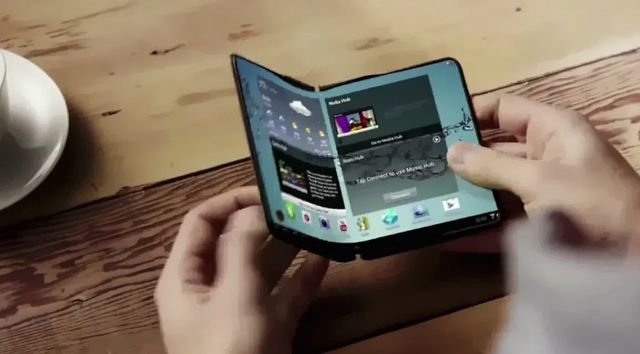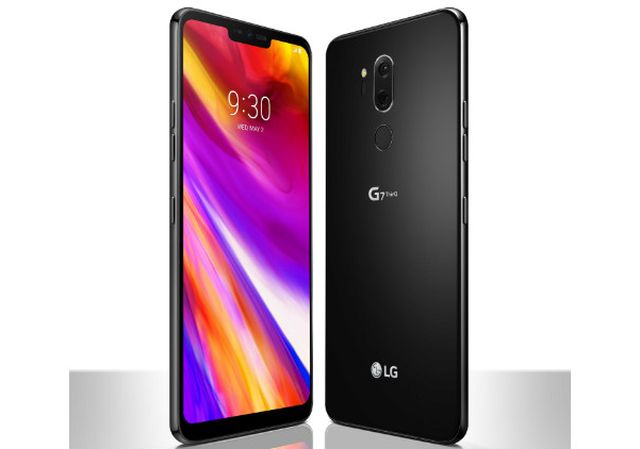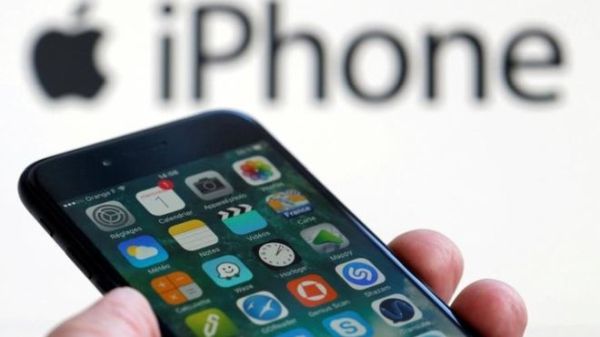
by Editor | May 25, 2021 | Branding, Business, Marketing Basics, Markets, SMEs, Technology
 By Rachel V. Thomas,
By Rachel V. Thomas,
Seoul : Samsung, a global leader in display technology, is confident of coming up with an industry-leading display technology in its next flagship smartphone, a top executive said here on Wednesday.
According to Harksang Kim, Senior Vice President and Head of Mobile Visual R&D at Samsung Electronics, the company’s next flagship smartphone will have industry-leading, screen-to-body ratio.
This is in line with recent media leaks that the tech giant’s anniversary edition Galaxy flagship will be almost bezelless.
“Samsung is focused on enhancing the size of the display and, importantly, the ratio of the active area on the handset,” said Kim, adding that “our screen-to-body-ratio will be top notch”.
On foldable displays, Kim pointed out that Samsung has been developing the technology since the last four years.
“We have been working on foldable display for the last four years. But we are not focusing so much on the foldability itself but on benefits it can offer beyond a bigger display. We want to offer something beyond tablets in terms of application and solutions,” Kim stated.
He noted that the focus is on security and stability of foldable hardware as simply making a foldable display is not an innovation but just another method for providing a larger screen.
The South Korean tech giant also wants to focus on consumers’ ease of use and convenience.
“By next month, you will hear some official announcements by Samsung Electronics not just on hardware development but also on software and platform preparations as well,” the executive informed.
While Samsung smartphones currently provide two solutions for personal identifications — fingerprint recognition and iris scanning — the company is also working on optical fingerprint recognition sensors.
However, since personal identification is directly linked to personal information and brings potential risks to the consumers, the tech giant is trying to be careful.
“Although we know that there may be delays, we are reviewing optical solutions in terms of in-display finger recognition tech and other solutions,” Kim said.
On cameras, in the future models, the rear cameras will be developed to see beyond what the human eyes can see.
“From the hardware perspective, few years down the road, we believe that rear cameras with their DSLR technology are not just going to capture the environment or nature but beyond what the human eye can see.
“Fundamentally, the rear facing camera technology will be all about communications. For example, when I’m not available, my Augmented Reality (AR) emoji will be communicating on my behalf,” Kim said.
(Rachel V. Thomas is on a visit to Samsung Headquarters at Seoul. She can be contacted at Rachel.t@ians.in)
—IANS

by Editor | May 25, 2021 | Markets, News, Technology
 New Delhi : More than a billion smartphones will be sold in India over the next five years, taking the number of users to surpass 700 million by 2022, Counterpoint Research said on Friday.
New Delhi : More than a billion smartphones will be sold in India over the next five years, taking the number of users to surpass 700 million by 2022, Counterpoint Research said on Friday.
Mid-range smartphones (roughly Rs 14,000-Rs 29,000), will grow 20 per cent (year-on-year) in 2018 and by almost four times during the next five years to make it one of the most important smartphone segments in India, the market research firm added.
The sales volume sweet spot is moving from sub-$150 (nearly Rs 10,000) segment towards mid-tier as many features and capabilities common among flagship models, progressively diffuse through to these lower price bands, noted Counterpoint’s white paper on “India Mid-Tier Smartphone Segment and opportunity for SoC players”.
“Features such as full-screen displays, dual-cameras, biometric security and support for Artificial Intelligence (AI) are beginning to make in-roads to the mid-range. They will become widespread over the next few years,” said Tarun Pathak, Associate Director at Counterpoint Research.
Many of these advanced features will be enabled and enhanced through the evolution of the underlying System-on-Chip (SoCs) and other components.
“These features will help OEMs to differentiate their offerings in the mid-tier segment at a time when overall smartphone innovation is perceived to have plateaued,” Pathak added.
India is the second largest smartphone market in the world after China. It has just surpassed 400 million smartphone users.
However, this accounts for just 44 per cent of the potential total addressable market for smartphones as the country is underpenetrated relative to many other markets.
“Part of this lack of development can be attributed to the poor relative development of data-capable mobile networks and high data pricing. Upstart operator, Reliance Jio, has catalysed a rapid shift toward 4G LTE, together with much more accessible data pricing,” noted Research Director Neil Shah.
Looking at the competitive environment, the top five brands contributed to 92 per cent share of the mid-tier segment in India.
Samsung, Vivo, Apple, OPPO and Huawei were the leading brands in the first half of 2018.
“However, we expect competition to increase in the segment as more brands enter including Xiaomi, Asus, Nokia HMD and others,” said the white paper.
The role of SoC players is critical to unlocking the potential of the mid-tier market segments.
If done successfully, we believe the mid-tier segments will grow almost four times in volume over the next five years in India. To enable this growth, cutting-edge solutions such as Qualcomm’s Snapdragon 710 are required on a broad scale.
“Qualcomm already has a strong presence in key brands in the mid-tier. The Snapdragon 710 can further strengthen Qualcomm’s share within key brands in the mid-tier segments as it has in the $100-$200 lower-tier segment,” the white paper added.
—IANS

by Editor | May 25, 2021 | Branding, Business, Markets, Sales, SMEs, Technology
 By Krishna SinhaChaudhury,
By Krishna SinhaChaudhury,
New Delhi : South Korean tech major LG has always been a darkhorse in the flagship smartphone race in India, in a market that is essentially dominated by the likes of Apple, Google and Samsung — not to forget top Chinese smartphone player OnePlus.
The company’s focus has been to present their smartphones in a rather hushed tone in the country, often minus the limelight.
Its recently-launched G7+ ThinQ is no exception. It was introduced in the country for Rs 39,990 amid no fanfare with specifications as good as any other flagship smartphone.
What makes the G7+ ThinQ different from LG’s other smartphones is the “ThinQ” branding is the fact that the device can be used along with some of the other Artificial Intelligence (AI) products from the company.
With a premium-looking body and a top-notch processor, the South Korean tech major has cleverly pitted the G7+ ThinQ in the sub-Rs 40,000 price segment that competes with the likes of the affordable flagships, such as the OnePlus 6 and the Asus Zenfone 5Z.
At a first glance, LG’s latest offering G7+ ThinQ looks like a dependable smartphone. But, is there more to it? Let’s find out.
LG has made use of glass and metal to render a surprisingly light and ergonomic feel to the G7+ ThinQ. It is worth mentioning that despite housing a 6.1-inch IPS QHD+ display, this is one compact flagship available out there now.
The screen has 1000nits of brightness, which makes for an impressive sunlight legibility at this price point.
There are two vertically-stacked 16MP+16MP cameras at the rear, which are almost flush with the device. The dual-lens AI snapper categorises subjects and automatically tune its settings to click better shots via Machine Learning (ML) technology.
The camera’s AI feature was useful but we found it a bit overwhelming when it scanned the frame and added a filter or adjusted the colour exposure automatically.
Images taken in the daylight condition had a good amount of detail and punchy colours. The close-up shots turned out better than the landscape photos. Snaps shot in low-lighting conditions came out equally good.
Below the rear cameras lies the fingerprint sensor which was snappy during the authentication.
The 8MP sensor at the front is a significant camera upgrade from LG. The self portraits were neat with just enough details.
The overall performance of the smartphone was good and we didn’t notice occasional hiccups, given the 6GB RAM and 128GB onboard storage.
LG has made the device weather-proof with IP68 certification for dust and water resistance. Interestingly, the phone is also shock-resistant to an extent thanks to the military standard (MLT-STD-810G) certification.
A dedicated AI button lies on the left side of the phone and unlike its South Korean rival Samsung, LG is not forcing its own smart assistant into our daily lives.
Pressing the key fires up the Google Assistant but the feature can thankfully be disabled.
Just like LG’s previous flagships, this device also has additions like “Quad-DAC” and “DTS:X 3D” surround sound up its sleeve. The earphones bundled in the box offer decent audio quality.
The phone comes with Qualcomm Quick Charge 3.0, which gave us around 40 per cent juice in 30 minutes of charge.
What doesn’t work?
The smartphone is fueled by a 3,000mAh battery which, we thought, would deplete easily if you’re a heavy gamer or browse videos a lot.
It was unusual to see the phone heat up on few occasions, such as using the camera app or updating apps on the Google Play Store.
Conclusion: LG G7+ ThinQ isn’t a flashy smartphone but it woos the user with competent cameras and ergonomics. The aggressive pricing and solid performance make it a good value-for-money buy.
(Krishna SinhaChaudhury can be contacted at krishna.s@ians.in)
—IANS

by Editor | May 25, 2021 | Branding, Business, Marketing Basics, Markets, Sales, SMEs, Technology
 By Nishant Arora,
By Nishant Arora,
New Delhi : As Apple refreshed its luxury iPhone line-up last week, Manu Jain who is Vice President, Xiaomi Global and Managing Director, Xiaomi India, tweeted: “Choose wisely — MI (Xiaomi) or EMI”.
Jain reacted to a follower who mentioned that one has to shell out Rs 12,075 a month as zero-cost EMI for a period of one year to own the 512GB variant of iPhone XS Max that will come for a mind-boggling Rs 144,900 in India.
Apple this month announced two other new models. The iPhone XS with 512GB storage model will cost Rs 134,900 and the cheapest of the lot, the iPhone XR, has a starting price (64GB) of Rs 76,900 in India.
The message from the $1 trillion company is loud and clear: Come what may, either own a new iPhone with a higher price tag or adjust with older and discounted models.
Here is the truth: Apple shipped 63 million iPhone X’s (now discontinued) till August this year. According to Counterpoint Research, iPhone X is on track to become the most successful revenue and profit-generating iPhone ever.
These 63 million-odd consumers are set to upgrade to new “luxury” iPhones – down payment or via EMI route — so the global smartphone powerhouse is safe here.
India contributed to just one per cent of the total iPhone X shipments till August. In 2017, Apple sold nearly 3.2 million iPhones in India and the company does not appear to be either in a panic or aggressive mode to change the status quo at the moment.
The company is also not in a mood to compete with Xiaomi or other Chinese brands but aims to keep its brand image and aspirational value intact, say experts.
“Apple remains a luxury brand and this has been their overall strategy for years. India is not in the list of top 10 global markets for them when it comes to new iPhone launches. The company has a strong loyal base globally who will buy its devices despite the hefty price tag,” Jaipal Singh, Associate Research Manager, Client Devices, IDC India, told IANS.
“For the Indian market, Apple will never compete with Chinese brands by lowering prices of new iPhones,” Singh added.
According to Tarun Pathak, Associate Director, Mobile Devices and Ecosystems at Counterpoint Research, hardcore Apple users would be willing to shell out the hefty price because owning a new Apple device is a status symbol for them.
“However, that section is still small. We believe that Apple strategy in India should be to sell more iPhones rather than new iPhones. Given the stickiness of the iOS ecosystem, these older iPhone users are likely to upgrade to iPhone only,” Pathak told IANS.
This is exactly what Apple has done. The company has slashed prices of older iPhones for the Indian consumers who want to upgrade to iPhone 7, iPhone 8 and even iPhone X.
Apple has discontinued the “super premium” iPhone X that actually did quite well despite low sale predictions.
The Cupertino-based company has also bid goodbye to iPhone SE – its least expensive model which was being assembled in India and the iPhone 6s — marking the end of iPhones with headphone jacks.
According to Pathak, the fact is that aspirational user audience is more in number than hardcore iPhone users in India. So there can be uptick in Apple numbers driven by cheaper older generation iPhones.
Depending on the quarter, the older generation iPhones capture somewhat half to two-third of Apple’s total sales in India.
“As custom duty continues to have impact on iPhone prices and making new iPhones is costlier, the price cut and subsequent promotions of older generation iPhones can increase iPhone sales in India. iPhone 7 can be the new iPhone 6 for Apple in the country,” noted Pathak.
Since Apple does not manufacture or assemble its products in India, the price will always be on the higher side.
“What Apple can do for the Indian market is to open experiences centres, the way Samsung and OnePlus have done, to pull more Android users towards its ecosystem. A bigger retail presence will help Apple gain more share in the price-sensitive Indian market,” Singh emphasised.
Apple is currently going through an overhaul under Michel Coulomb, the new head of the India operations who took over from Sanjay Kaul in December last year.
The iPhone maker is also seeking tax relief and other incentives from the government to begin assembling more handsets in the country and its proposal to set up a manufacturing unit is reportedly being evaluated.
According to Pathak, new iPhones can still be a good upgrade for users in India which have skipped the previous iPhone generations but the company will never lower the prices for new iPhones.
In a nutshell, CEO Tim Cook has clearly told India that Apple is the Ferrari in the world of smartphones and to own that exclusiveness, shell out extra – cash down or EMI — as others are doing.
(Nishant Arora can be contacted at nishant.a@ians.in)
—IANS

by Editor | May 25, 2021 | Branding, Business, Economy, Markets, News, SMEs, Technology
 By Prabhu Ram,
By Prabhu Ram,
With its new aspirational premium sub-brand POCO, Chinese smartphone maker Xiaomi seeks to disrupt the Indian market by redefining the premium segment.
The “POCO F1” smartphone, launched this week in India, comes with all the specifications that a “premium smartphone” boasts of, at a price unheard of.
The question lingers: Has POCO played safe with its pricing?
According to the data from “CMR Mobile Handset India Market Review”, since it made its debut in India in 2014, Xiaomi has grown tremendously, accounting for almost 30 per cent of the smartphone shipments.
It has aggressively competed with Samsung for the pole position in the India smartphone market. Xiaomi has gained a reputation for selling smartphones at aggressive price points, and is enjoying mass market appeal.
Xiaomi has sold low-end and mid-range smartphones with specs comparable to the competition, but at cut-throat prices.
Its early success came through e-commerce platforms as well as its own online store. Of late, it has expanded its footprint in the offline space, through brick and mortar stores, to power its growth.
A multi-brand strategy, if well executed, enables one to target different demographics and distinct audiences.
This is a proven strategy that automobile companies have adapted for decades — to break price ceilings and boost growth with a different branding to shake-off their existing brand imagery.
From a strategy perspective, creating a sub-brand named POCO was to take on premium smartphone brands, especially the likes of OnePlus.
In doing so, did POCO get its pricing wrong?
Surely, POCO will attract its own set of users and will do phenomenally well. While doing so, it will also eat into the market shares of the likes of Honor, Vivo, OPPO and Asus who have smartphones in the same price bracket.
However, POCO did not have these brands as their target competition and that, in itself, tells a story.
For a company like Xiaomi, getting the specs right and the price right are the easy asks but getting a user to shell out more for its brand is a tough ask.
Some smartphone flagships command buyers despite their price while others get buyers only because of their price.
For a smartphone to be considered as “premium” in the eyes of a potential smartphone buyer, it needs to have the brand recognition and equity to back its pricing up.
Let us consider an analogy from the automobile sector. When Lexus was conceived, Toyota invested all their engineering and manufacturing expertise into the luxury brand.
They backed Lexus with a clear brand positioning in the luxury cars segment. In the US, buyers would not consider the Lexus LS400 as a “true luxury car”, if it were to be placed next to a Toyota Corolla on a lot.
Similarly, for POCO to taste success as a “premium brand”, it has to move away from Xiaomi’s shadows.
With POCO F1, the brand draws upon Xiaomi’s extensive supply chain strengths in India to deliver the cheapest flagship smartphone ever — powered by Snapdragon 845 processor with a big 4,000mAh battery to boot.
POCO F1 comes with a 6.18-inch 1080p display, a 20-megapixel front camera and dual rear camera, sporting 12-megapixel and 5-megapixel cameras. It offers all the premium specs in the sub-Rs 30,000 price band (the premium segment is considered Rs 30,000 and above).
While POCO has almost won the specs war, the plastic or “polycarbonate” back takes the sheen off the “aspirational premium” smartphone tag.
Ultimately, it is not just about what is on the inside but how it looks on the outside that sways a potential smartphone buyer, especially in the premium segment.
The users of POCO F1 will be Xiaomi Note users who are now replacing or upgrading their device. The loyal Xiaomi fan will be keen on upgrading to a premium device from the Xiaomi brand itself.
However, this is not the demographic that Xiaomi had in mind when it created POCO as a sub-brand.
If POCO from Xiaomi has aspirations of being seen and perceived as a “premium” smartphone by the users, it has to have the courage to price it accordingly.
Unfortunately, POCO plays safe.
(Prabhu Ram is Head, Industry Intelligence Group, at CyberMedia Research. The views expressed are personal. He can be reached at pram@cmrindia.com)
—IANS





